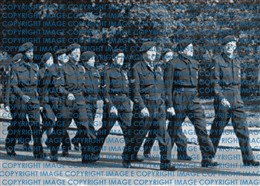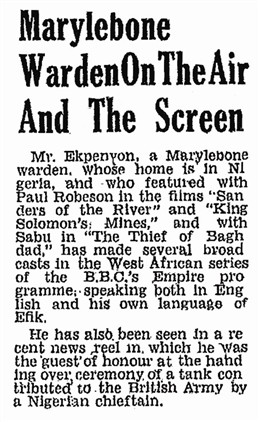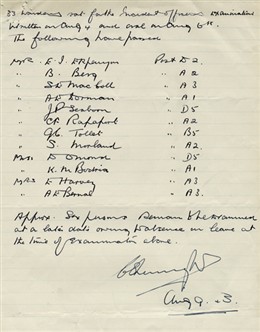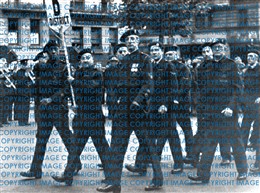West Indian & Africans in Civil Defence

Ita Ekpenyon with his comrades from St Marylebone D2 sector ARP wardens on parade
Winifred Ekpenyon

25 March 1944 Newspaper clipping from The Willesden Citizen describing Ekpenyon's film career
Stephen Bourne

Ita Ekpenyon's name appears on a St Marylebone Civil Defence service list of candidates passing an examination for promotion to Incident Officer
Copyright Westminster City Archives

E.Ita Ekpenyon marches alongside fellow St Marylebone D2 sector wardens
Winifred Ekpenyon
By Rory Lalwan
At the outbreak of war the British armed forces enforced a colour bar which denied the granting of commissions to anyone not of "pure European descent". While this prohibition was officially relaxed during the course of the war, in practice it remained largely in force. Only in the RAF was a significant West Indian and African contribution allowed to become a reality.
Notwithstanding some early resistance to their employment, West Indian and Africans were to be found in civil defence work in most of the London boroughs. The newsletter of the League of Coloured Peoples reported in 1941:
"St Pancras Borough Council has a particularly strong coloured ARP section. Among these may be noted Deputy Shift Leader Singe from Trinidad, Chick Alexander from Jamaica, Charles Allen from Freetown, Sierra Leone. Laryea from Accra, A Kester from Nigeria, E. Gonzaley from Trinidad, Sam Blake, Jamaica. Ote Johnson of Nigeria, S Shannon of Monrovia, Liberia. A.K. Lewis, law student, from Freetown. All these men are stretcher bearers and possess the certificate of the St. John's Ambulance Brigade. D.E.Headley of British Guiana is a warden at St Pancras. E Mahlohella from South Africa is a driver to a stretcher party in the same borough ... All over London it's the same thing ...we have shown that we are quite prepared to shoulder our part of the war burden. Coloured people as a whole have really come forward and shown their willingness to co-operate with the people of Britain in their titanic struggle".
A number of the West Indian Service personnel who had served Britain in the conflict returned in the years following the war, answering a call to fill labour shortages. They were to contribute to the country's post-war reconstruction and renewal following the devastation of wartime bombing and disruption.